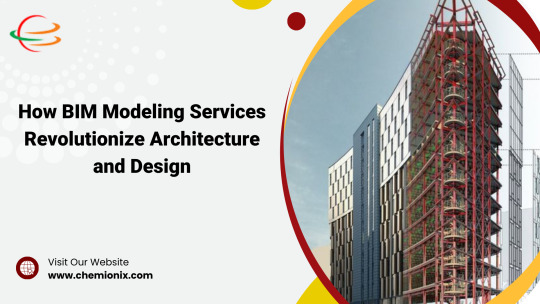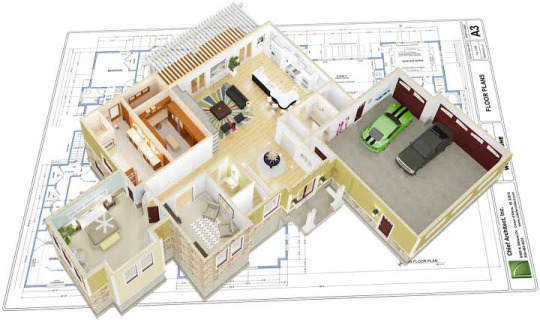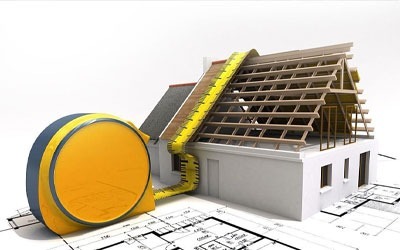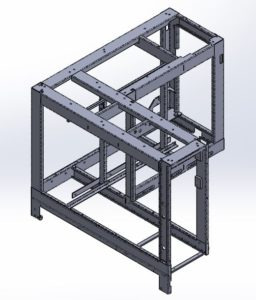#cad to bim model
Text
youtube
In this video, we delve into the world of CAD to BIM Model Conversion, exploring the incredible potential it holds for your design projects. Discover the secrets to streamline your design process and enhance your project's success. Whether you're a beginner or a pro, this guide will be your key to success.
Watch the complete video here, https://youtu.be/HoMTniijjQE
#cad to bim#3d bim modeling#architectural bim model#structural bim model#mep bim model#cad to bim model#cad to bim conversion#Youtube
0 notes
Text
CAD to BIM in AEC Projects

In the modern architecture world, CAD to BIM conversion is now widely adopted technology which made the construction process much easier, faster and more accurate. It is an effective solution for the complex process of construction as CAD to BIM helps to visualize the entire project with better clarity, understanding and communication.
#cad to bim#cad to bim services#cad to bim conversion#cad to revit#cad to revit services#autocad to bim conversion#autocad to revit#pdf to bim#pdf to revit#pdf to bim services#pdf to 3d model#pdf to revit services#pdf to bim conversion services#cad to bim modeling services#cad to revit converter#autocad to bim services
2 notes
·
View notes
Text

Erasmus is one of the topmost Outsourcing architectural 3d visualization and rendering company based out of India, offering graphics rich 3D Rendering Services at affordable prices.
#bim services#civilengineering#bim technology#autocad#2d drafting services#constructioncompany#3d render#rendering#3d bim modeling services#3d cad modeling#data entry#architecture#civil construction#renovation#building#wednesday motivation
3 notes
·
View notes
Text
Here describe in my document about BIM Services, their types, and what we service doing of BIM Services So, visit and then think about your project outsourcing to us at a reasonable price.
Visit More Info :
https://www.siliconec.com/
#BIM Engineering Services#BIM Design#BIM Drafting#CAD Services#BIM Detailing#BIM Modeling#CADServices#SiliconEC
2 notes
·
View notes
Text
10 Key Factors to Consider When Choosing BIM Modeling Services for Your Project

Building Information Modeling (BIM) has become a cornerstone in modern construction and design projects. As the need for efficient project management, collaboration, and accuracy grows, selecting the right BIM modeling services is crucial for achieving a successful outcome. This guide will walk you through the key considerations to help you choose the best BIM services for your project, ensuring seamless collaboration, efficiency, and quality results.
1. Understand Your Project Requirements
The first step in selecting the right BIM services is a thorough understanding of your project’s specific requirements. Each project has unique needs, and the complexity of these requirements will determine the type of BIM services that are ideal. Here’s what you need to consider:
Project Size and Scale: Larger, complex projects may require comprehensive BIM services, including 3D, 4D, 5D, and even 6D modeling. These models integrate time, cost, and sustainability considerations.
Industry-Specific Needs: BIM applications vary across industries like architecture, construction, civil engineering, and manufacturing. Ensure that the service provider has experience in your specific sector.
Project Phase: Identify whether you need BIM modeling for early-stage design, construction, or facility management. Different services may specialize in different project phases, so choose accordingly.
2. Check the Provider’s Expertise and Experience
A BIM service provider’s level of experience is a strong indicator of their ability to deliver quality results. Ensure the provider has a strong track record in the specific type of modeling services you require. Some factors to evaluate include:
Portfolio of Past Projects: Ask for case studies or examples of previous projects similar to yours. This will give you an idea of the provider’s expertise in handling similar challenges.
Industry Certifications: Look for providers that hold relevant certifications such as ISO standards in BIM, which demonstrate adherence to high-quality service and international standards.
Technical Expertise: The right provider should be proficient in industry-leading BIM software like Autodesk Revit, Navisworks, ArchiCAD, and Tekla. Providers familiar with a wide range of tools can offer more customized solutions for your needs.
3. Evaluate the Range of BIM Services Offered
BIM is more than just 3D modeling. It involves the integration of multiple dimensions (4D, 5D, 6D) that can add value to your project. Before making a choice, ensure the service provider offers a broad range of BIM services that align with your project goals:
3D BIM Modeling: This is the core of BIM and involves creating three-dimensional representations of your project.
4D BIM (Time): Integrating time allows you to visualize the construction process over time, aiding in project scheduling and timelines.
5D BIM (Cost): This service integrates cost data, helping you manage project budgets and track expenses effectively.
6D BIM (Sustainability): Sustainability models help optimize energy efficiency and meet environmental targets.
BIM Coordination: This service ensures all disciplines—architectural, structural, MEP (Mechanical, Electrical, Plumbing)—are working together without conflicts.
A provider that offers a wide array of services will be better equipped to handle your project’s evolving needs.
4. Assess Collaboration and Communication Capabilities
Effective collaboration is at the heart of BIM, allowing all stakeholders to stay on the same page throughout the project’s lifecycle. Choose a BIM service provider that uses modern collaboration tools to ensure seamless communication. Key aspects include:
Cloud-Based Platforms: BIM 360 and similar platforms allow real-time updates, remote access, and centralization of project data. This improves transparency and facilitates collaboration among dispersed teams.
Coordination Tools: Clash detection and coordination services should be a part of the provider's offerings to avoid conflicts between various disciplines and reduce rework.
Regular Updates and Meetings: Ensure the provider is open to frequent project updates and status meetings, which helps in early problem identification and resolution.
5. Consider the Integration with Other Technologies
BIM can integrate with other cutting-edge technologies, such as artificial intelligence (AI), virtual reality (VR), and the Internet of Things (IoT). These integrations provide significant benefits like enhanced visualization, predictive analytics, and real-time monitoring.
AI-Driven Insights: Some BIM providers offer AI integrations that help with automated design processes, reducing errors and improving efficiency.
VR/AR Capabilities: Virtual and augmented reality can give stakeholders an immersive experience of the project, allowing for real-time feedback during the design phase.
IoT Integration: IoT devices linked with BIM models enable real-time monitoring and management of a building post-construction.
Choosing a BIM service provider with access to these advanced technologies can give your project a competitive edge and improve overall project outcomes.
6. Evaluate Data Security and Privacy Protocols
Given the sensitive nature of construction projects, including financial data, design specifics, and timelines, it’s essential to select a BIM provider that has robust data security protocols in place. Some key areas to evaluate:
Compliance with Standards: Ensure the provider adheres to industry data security standards such as ISO/IEC 27001.
Cloud Security: If the provider uses cloud-based solutions like BIM 360, check the security measures in place to protect against data breaches and unauthorized access.
Data Ownership and Access Rights: Clarify who owns the data and who has access to it, both during and after the project lifecycle.
Ensuring that your project’s data is secure will not only protect sensitive information but also ensure smooth project management with minimal disruptions.
7. Check the Provider’s Flexibility and Scalability
Your BIM needs may evolve as the project progresses. Choose a provider that is flexible enough to adapt to changes and scalable enough to handle larger volumes of data or increased project complexity as required. Key points to consider include:
Modular Service Offerings: Can the provider scale their services up or down based on your project’s changing needs?
Adaptability: A good BIM provider should be able to adapt to project-specific requirements, whether it’s adding new functionalities or collaborating with other project teams.
Flexibility in services will ensure your project remains efficient, even as it grows in scope or complexity.
8. Consider Cost-Effectiveness
While cost shouldn’t be the only determining factor, it’s important to assess the value you’re getting from the BIM service provider. Some ways to ensure cost-effectiveness:
Transparent Pricing Models: Choose a provider with clear pricing structures and no hidden costs. Some providers may offer fixed pricing, while others may charge based on project complexity or time.
Value for Money: Compare the quality of services, expertise, and technological capabilities the provider offers against their pricing. Sometimes paying a bit more can lead to significant returns in terms of quality and efficiency.
Potential for Cost Savings: BIM, by nature, offers cost-saving benefits such as reduced rework, improved scheduling, and better resource allocation. Ensure the provider can deliver these benefits to optimize your project budget.
9. Seek Client Testimonials and Reviews
One of the best ways to gauge a provider’s performance is by reviewing client testimonials, reviews, and feedback. Look for clients who have had similar projects and see if they mention specific benefits, such as:
Timely Delivery: Did the provider meet project deadlines?
Collaboration Quality: Was the communication clear, and did the provider work well with other teams?
Problem-Solving Abilities: How did the provider handle unforeseen issues or changes during the project?
Client reviews offer insights into the provider’s working style and reliability.
10. Ensure Long-Term Support and Maintenance
BIM modeling doesn’t stop after the design phase. Long-term support and maintenance are critical for the success of the building’s lifecycle. Look for providers that offer:
Post-Construction Support: Ensure the provider offers assistance in updating the model as changes occur during construction.
Facility Management Integration: Many buildings require continued BIM support for facility management, including monitoring energy usage, maintenance schedules, and system upgrades.
Choosing a BIM service provider that offers long-term support can improve your building’s operational efficiency and reduce costs over time.
Conclusion
Selecting the right BIM modeling services can have a profound impact on your project's success, from design through construction and even beyond. By understanding your project’s needs, assessing the provider’s expertise, and ensuring a good fit in terms of collaboration, flexibility, and cost, you’ll be able to make an informed decision that maximizes value and ensures the highest quality results for your project.
#bim modeling services#bim outsourcing services#revit modeling services#outsource bim services#bim service#outsourcing bim#3d bim modeling services#building information modeling services#bim outsourcing companies in usa#bim design services#bim outsourcing companies#bim modeling firms#bim design outsourcing#bim services india#architectural bim modeling services#architectural bim modeling services outsourcing#bim drafting outsourcing#bim modeling service market#bim modeling outsourcing#cad to bim modeling services#bim outsourcing company
0 notes
Text
#3D Modeling#cad drafting services#bim modeling services#2d mechanical drawing#hvac duct layout drawing#mechanical engineering services#cad design services#mep bim services#mechanical design services#mep engineering services#engineering consulting services#clash detection services#bim service providers#shop drawings services
0 notes
Text








In the realm of modern architecture and design, BIM Modeling Services have emerged as a transformative force, reshapin
g the way buildings are planned, designed, and constructed. As technology advances, so too does the complexity and precision required in architectural endeavors. This is where BIM Modeling Services step in, offering comprehensive solutions that blend innovation with efficiency.
In this article, we will understand how BIM modeling services revolutionize architecture and design.
0 notes
Text
Top 5 Home Design and Construction Software
The home design and construction industry has evolved significantly with the advent of technology, leading to the development of sophisticated software tools that enhance design processes, improve collaboration, and streamline project management. Here, we explore the top five home design and construction software options available today, highlighting their features, benefits, and suitability for…

View On WordPress
#3D modeling software#Archicad review#architectural design tools#architectural visualization software#AutoCAD for architects#best home design software#BIM software#CAD software#Chief Architect features#collaborative design tools#construction project management tools#construction software#home design applications#home design software#interior design software#residential design software#Revit alternatives#SketchUp benefits
0 notes
Text
Easy Communication Of Construction Projects Through BIM Services:-
You know how important is BIM services for the construction project. It gives a crystal-clear understanding of the project and how things will take place which leaves no room for error. Digital representation of the structure is made to avoid any mistakes in the construction stage. So, if you are looking for excellent services regarding this, then our BIM Services in Canada will be the best choice. https://www.seekcurity.com/blog-easy-communication-of-construction-projects-through-bim-services.html

#CAD Outsourcing Company in Canada#Interior Design BIM Consultancy in Canada#BIM Consulting and Outsourcing Services in Toronto#Point Cloud BIM Modelling Services in Toronto#Rebar Modelling services in Toronto
0 notes
Text
Scan to CAD and point cloud to BIM modeling services
Introduction:
In the dynamic realm of architecture, engineering, and construction (AEC), leveraging cutting-edge technologies is paramount for efficiency, accuracy, and innovation. One such transformative process gaining significant traction is Scan to CAD and Point Cloud to BIM Modeling Services. These services offer a bridge between physical reality and digital design, revolutionizing traditional workflows and opening avenues for unprecedented precision and creativity. Scan to CAD and Point Cloud to BIM modeling services have emerged as transformative tools, revolutionizing how professionals conceptualize, design, and execute projects.

Introduction to Scan to CAD and Point Cloud to BIM Modeling Services:
Scan to CAD involves the conversion of scanned data from physical objects or environments into Computer-Aided Design (CAD) files. On the other hand, Point Cloud to Building Information Modeling (BIM) entails the transformation of three-dimensional point cloud data into intelligent BIM models. These services collectively offer a comprehensive solution for modern design challenges. Scan to CAD processes capture detailed spatial information of physical structures with remarkable precision. This data is then transformed into digital CAD models, providing designers and engineers with a comprehensive virtual representation of the scanned environment.
Enhanced Accuracy and Precision:
One of the key advantages of Scan to CAD and Point Cloud to BIM Modeling Services is their ability to capture intricate details with unparalleled accuracy. By utilizing advanced scanning technologies such as LiDAR (Light Detection and Ranging) and photogrammetry, every nuance of the physical environment can be accurately captured and translated into digital models, ensuring precise representation in the design phase.
Efficiency and Time Savings:
Traditional methods of manual measurement and drafting are not only time-consuming but also prone to errors. Scan to CAD and Point Cloud to BIM services streamline the design process by significantly reducing the time required for data acquisition and model generation. This efficiency translates into faster project delivery timelines and cost savings for stakeholders.
Seamless Integration with Existing Workflows:
These services seamlessly integrate with existing design workflows, enhancing collaboration among architects, engineers, and construction professionals. The compatibility of CAD and BIM models ensures smooth communication and data exchange throughout the project lifecycle, from conceptualization to construction and beyond.
Improved Visualization and Analysis:
By converting point cloud data into intelligent BIM models, designers gain access to powerful visualization and analysis tools. This enables them to explore different design scenarios, conduct clash detection, and simulate real-world conditions with greater accuracy, leading to informed decision-making and optimized design outcomes. Facilitating Renovation and Retrofit Projects:
Scan to CAD and Point Cloud to BIM services are particularly valuable for renovation and retrofit projects where accurate as-built documentation is essential. By capturing existing conditions in detail and creating precise digital models, designers can seamlessly integrate new elements into existing structures, minimizing disruptions and maximizing efficiency.
Supporting Sustainable Design Practices:
The ability to accurately assess existing building conditions and visualize the impact of design changes contributes to sustainable design practices. By optimizing energy efficiency, material usage, and building performance, Scan to CAD and Point Cloud to BIM Modeling Services play a crucial role in creating environmentally conscious and resource-efficient structures.
Enhancing Safety and Risk Mitigation:
Accurate documentation of existing conditions through point cloud scanning reduces safety risks associated with site visits and manual measurements. Moreover, by identifying potential clashes and design inconsistencies early in the process, these services help mitigate construction errors and costly rework, enhancing overall project safety and quality.
Adapting to Evolving Industry Trends:
As the AEC industry continues to embrace digital transformation, Scan to CAD and Point Cloud to BIM Modeling Services are poised to play an increasingly integral role. From augmented reality (AR) and virtual reality (VR) applications to the integration of artificial intelligence (AI) for automated modeling tasks, the possibilities for innovation are vast and evolving.
Conclusion:
Rvtcad represents Scan to CAD, and Point Cloud to BIM Modeling Services represents a paradigm shift in the way architectural and construction projects are conceived, designed, and executed. By harnessing the power of advanced scanning technologies and intelligent modeling algorithms, these services empower designers to push the boundaries of creativity while ensuring accuracy, efficiency, and sustainability in every project they undertake. Embracing these transformative capabilities is not just a choice but a necessity for staying competitive in today's rapidly evolving AEC landscape.
#Scan to cad#point cloud to bim modeling#scan to bim#point cloud to bim#bim services#3d laser scanning#bim laser scanning#scan to revit#as-built drawing#as-built drawings#point cloud to cad
0 notes
Text
Add Value to Construction Projects by PDF to BIM Conversion

PDF to BIM conversions allows architects, engineers, advanced software such as Revit, and other collaborators to work efficiently with deep insights, especially for renovation and reconstruction projects. With that keeping in mind, it has become an influential tool with use of advanced softwares such as Revit where PDF to BIM is accurately converted and with the smallest of details for professionals to carry out the project's success. Please take a look at how PDF conversion to a BIM model can add value to a project with accurate end results.
#cad to bim#cad to bim services#cad to bim conversion#cad to revit#cad to revit services#autocad to bim conversion#autocad to revit#pdf to bim#pdf to revit#pdf to bim services#pdf to 3d model#pdf to revit services#pdf to bim conversion services#cad to bim modeling services#cad to revit converter#autocad to bim services
2 notes
·
View notes
Text
CAD migration services
What is CAD Data Migration?
Computer-aided design (CAD) data can be in different formats depending on how it is created, digitized and stored. Data can be sketched or drafted paper documents, scanned or pdf files, or existing CAD file systems including ACIS, .3ds, AutoCAD DXF, .dwg, and DGN, among others.

Based on the project specifications and design, we are ready to help you make use of different types of data including files in PDF, paper documents or scanned images, and convert them into stunning 3D models and 2D drawings. We can also provide completely confidential conversion of your existing legacy system data into a CAD migration services you need.
#civilengineering#bim services#constructioncompany#realestate#cad#2d drafting services#bim technology#autocad#data entry#civil construction#3d cad modeling#cad migration#karnataka#banglore#saturday
3 notes
·
View notes
Text

Elevate your structural projects with Silicon Engineering Consultant's premier Structural BIM Services In Chicago.
Visit Us:
#Structural 3D Modeling#Schematic Design Documentation#Structural Drafting and Detailing#Revit 3D Modeling#As-Built Modeling and Drawing#Structural BIM Design and Drafting Services#Structural BIM CAD Services#BIM Modeling Services#Structural BIM Modeling Services#Structural BIM Engineering Services
1 note
·
View note
Text
Benefits of BIM Modeling in Modern Construction

Building Information Modeling (BIM) is a transformative approach in modern construction that leverages digital tools to improve efficiency, accuracy, and collaboration throughout the construction lifecycle. Here are several key ways BIM modeling helps in modern construction:
1. Enhanced Collaboration and Communication
Centralized Information Repository: BIM provides a shared digital space where all stakeholders, including architects, engineers, contractors, and owners, can access up-to-date project information.
Real-time Updates: Changes made in the BIM model are instantly visible to all parties, reducing misunderstandings and facilitating quicker decision-making.
Interdisciplinary Coordination: BIM integrates various disciplines into a single model, enhancing coordination and reducing clashes between structural, mechanical, electrical, and plumbing components.
2. Improved Visualization and Design
3D Modeling: BIM allows for the creation of detailed 3D models, providing a clear and comprehensive visual representation of the project.
Virtual Reality (VR) and Augmented Reality (AR): These technologies can be integrated with BIM to offer immersive experiences, enabling stakeholders to visualize the project in a more intuitive and engaging manner.
3. Increased Accuracy and Reduced Errors
Clash Detection: BIM software can automatically detect conflicts between different building systems (e.g., pipes running through beams), allowing for resolution before construction begins.
Detailed Documentation: BIM generates precise and consistent construction documents, reducing the likelihood of errors and omissions.
4. Enhanced Cost Management
Cost Estimation: BIM can provide accurate quantity take-offs and cost estimates, helping to manage budgets effectively.
Lifecycle Cost Analysis: It facilitates analysis of the total cost of ownership, including construction, operation, and maintenance costs.
5. Time Savings and Improved Scheduling
4D Modeling (Time): BIM incorporates the time dimension, allowing for the creation of construction schedules linked to the 3D model. This enables better planning and monitoring of project timelines.
Construction Simulation: It allows for the simulation of construction sequences, identifying potential issues and optimizing workflows.
6. Better Risk Management
Scenario Analysis: BIM enables the exploration of various scenarios and their impacts on the project, aiding in risk assessment and mitigation.
Regulatory Compliance: It helps ensure compliance with building codes and regulations by embedding rules and standards within the model.
7. Enhanced Facility Management
As-built Models: The BIM model serves as a comprehensive record of the completed project, useful for maintenance and operations throughout the building's lifecycle.
Asset Management: BIM aids in tracking and managing building assets, improving efficiency in facility management.
8. Sustainability and Energy Efficiency
Energy Analysis: BIM tools can perform energy analysis and simulations, helping to design buildings that are more energy-efficient.
Material Optimization: It aids in selecting sustainable materials and optimizing their use, reducing waste and environmental impact.
9. Improved Quality Control
Precision Construction: The detailed nature of BIM models enhances the accuracy of construction, ensuring that the project is built to specifications.
Ongoing Quality Assurance: BIM supports continuous monitoring and quality checks throughout the construction process.
Conclusion
BIM Modeling Services are a crucial asset in modern construction, offering significant benefits in terms of collaboration, accuracy, cost management, and overall project efficiency. By embracing BIM, the construction industry can achieve higher quality outcomes, reduced risks, and more sustainable practices.
#bim modeling services#outsource bim services#bim outsourcing services#revit modeling services#bim modeling service#outsourcing bim#3d bim modeling services#revit bim modeling services#revit modeling outsourcing services#bim outsourcing company#bim design outsourcing#cad to bim modeling services#revit outsourcing services#bim outsourcing companies in usa#revit family outsourcing services#pdf to bim modeling services#bim modeling outsourcing#outsource bim services india#bim outsourcing services in usa#revit services outsourcing#autodesk modeling outsourcing#revit modeling company#revit modelling services#bim outsourcing partner
0 notes
Text
#3D Modeling#cad drafting services#bim modeling services#2d mechanical drawing#hvac duct layout drawing#mechanical engineering services#cad design services#mep bim services#mechanical design services#mep engineering services#engineering consulting services#clash detection services#bim service providers#shop drawings services
0 notes
Text
Get the Best Steel Detailing Services in Glasgow, United Kingdom

Steel Detailing Services are provided by Silicon EC UK Limited in Glasgow, United Kingdom. Our engineering company offers comprehensive steel detailing solutions tailored to meet your exact needs. With years of experience and a dedicated team of professionals, we guarantee high-quality results that exceed your expectations. Our team consists of highly skilled and experienced steel detailers who are proficient in using the latest software and technologies to produce precise and detailed drawings. We prioritize accuracy in every aspect of our work. From initial concept drawings to final fabrication drawings, we ensure that all dimensions, connections, and details are meticulously checked to eliminate errors and avoid costly rework. Our cost-effective solutions help you save both time and money without compromising on quality. By optimizing resources and leveraging our expertise, we strive to provide maximum value for your investment. Contact us today to discuss your project requirements and discover how our premium Steel Erection Drawing Services can add value to your project. We look forward to partnering with you for success!
Supports and software facility:
Our dedicated workforce comprises steadfast QC heads, proficient Team Leads and experienced Steel Detailers who possess extensive expertise. Our Tekla Steel Detailing Services adeptly utilize cutting-edge software, including Tekla Structure showcasing a commitment to staying at the forefront of technological advancements.
Silicon EC UK Limited is a leading provider of Miscellaneous Steel Detailing Services in Glasgow, UK, offering a comprehensive suite of solutions designed to optimize the efficiency and performance of steel engineering projects. With a focus on accuracy, innovation, and client satisfaction, Silicon EC UK Limited continues to set the benchmark for excellence in the steel detailing industry.
For More Details Visit our Website:
#Steel Detailing Services#Tekla Steel Detailing Services#Structural Steel Detailing Services#Structural Steel Shop Drawing Services#Steel BIM Modeling Services#Steel Assembly Drawing Services#Steel Shop Drawing Services#Steel Shop Drawing Company#Joist Steel Detailing Services#Miscellaneous Steel Detailing Services#Tekla Steel Detailing Company#Joist Steel Detailing Services#Steel Erection Drawing Services#Assembly Shop Drawing Services#AutoCAD Steel Detailing Services#Steel Detailing Services in UK#Engineering Services#Engineering Company#CAD Design#CAD Drafting#CAD Drawing#CAD#CADD
0 notes